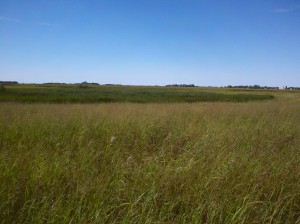A recent study from the University of Wisconsin – Madison claims that Minnesota converted more wetlands into farmland than any other state from 2008-12. Unfortunately, many media outlets reported the findings of this study without scrutinizing the study’s methodologies or questioning why it wasn’t peer-reviewed by fellow scientists instead of just an editor or editorial board.
If the UW-Madison study received the scrutiny it deserved, here’s what we would have learned:
- The study’s authors mainly used data from an outdated U.S. Department of Agriculture (USDA) satellite imaging system last updated in 2006. This type of data has been proven to be inaccurate unless cross-checked with more recent images or on-the-ground analysis, which the study’s authors did not appear to do.
- Using USDA’s Land Capability Classification (LCC) categories, the study claims converted land was considered “marginal” for farming. Unfortunately, the study’s authors do not appear to understand LCC terminology and its eight classes of land designation. Land classified in the first four classes is considered suitable for cropland. The study’s authors outright changed the definition of classes 3 and 4 by labeling them as having severe to very severe limitations in order to fit their definition of “marginal.”
- On another note, there are several federal and state laws that prevent farmers from draining, filling and excavating wetlands. For example, Minnesota has had a no net-loss wetlands policy since 1991, meaning any wetlands acres that are lost must be replaced. According to a recent Minnesota Department of Natural Resources study, Minnesota actually gained 2,080 acres of wetlands from 2006-11.
- The study claims that carbon emissions from the converted land equal a year of emissions from 34 coal-fired power plants. The authors do not share how they arrived at this conclusion and do not address accredited Life Cycle Analysis modeling research (that, unlike the UW-Madison study, has actually been peer-reviewed) that disproves this claim.
- The study does not address urbanization. Urban land areas grew by 15.7 million acres in the U.S. from 2000-10, dwarfing any estimated expansion of land for farming. Also, farmland can be, and is, rotated in and out of service. Once land is converted to urbanization, it can no longer be farmed or store carbon.
- Actually, land used principally for farming has decreased from 350 million acres nationwide in the 1980s to 320 million today.
Unfortunately, the UW-Madison “study” appears to be just another example of critics of modern agriculture coming up with a pre-determined set of results, then sitting behind a computer, massaging the numbers and designing a biased study to validate those pre-determined results.
It’s frustrating that farmers seem to always be put in a defensive position on land use and conservation issues. Unaccredited studies like the one out of UW-Madison make wild and unsubstantiated claims, grab all the headlines, then force farmers to refute the claims by using technical information and dry data points that aren’t as conducive to a catchy headline.
Are farmers perfect when it comes to conservation and land use? Of course not. But technology and a reliance on actual science – peer-reviewed and tested on the farm in real-world conditions – have helped farmers come a long way. Today’s farmers grow more food, feed, fiber and fuel on less land than ever before and using fewer inputs like fertilizers and pesticides to do it.
In the future, media outlets need to scrutinize studies like the one released by UW-Madison. Studies filled with bias and inaccuracy do nothing to improve conservation practices, or move farming forward.


